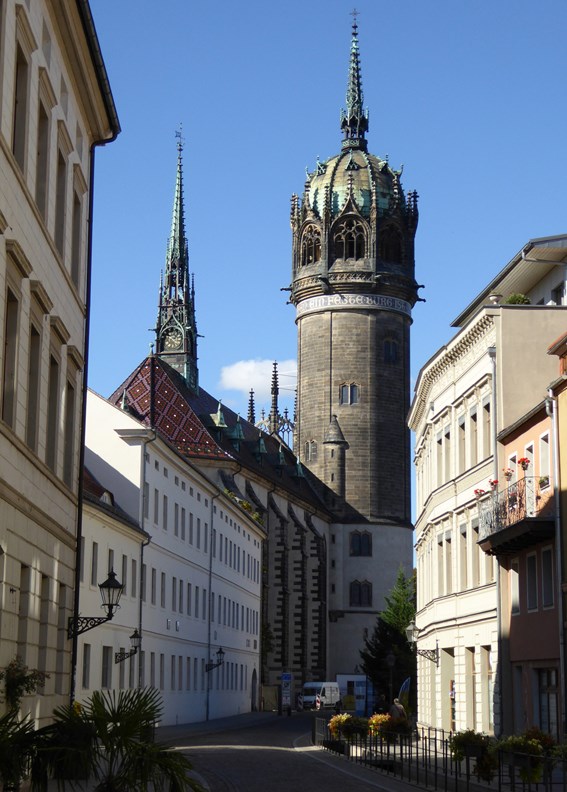Our Viking long-ship moors along the river Elbe outside the town where Martin Luther lived and preached. There, guide Carla leads us toward Lutherhaus, an Augustinian monastery given to Luther by a supportive aristocrat. “Now a museum, this cloister was Martin Luther’s residence for years, first as a monk; later as owner,” she describes.
Inside, we view Luther’s personal artifacts, including his pulpit and enormous Bible. His letter condemning purchased pardons is displayed above a chest used for collecting such indulgence money.
Paintings by local artist Lucas Cranach portray Luther and wife Katharina. “Cranach introduced Luther to Katharina von Bora, a spirited nun 16 years his junior,” Carla recounts. “She escaped a distant convent, taking refuge in Wittenberg. Locals believe she hid in a reeking fish barrel. Marrying Luther in 1525, Katharina proved an exceptional partner, organizing meals for a busy household, managing budgets and gardening.
Passing through the central part of this large building, we visualize Luther sharing these spacious rooms with Katharina, their six children and, after 1529, his sister’s six children. They also housed other friars, students, visitors and supporters, which bolstered the family finances.
“His rooms are maintained in their original state,” Carla points out. “Surrounded by family and friends, Luther discussed his ideas here during the evenings.” Benches line this large room’s panelled walls; a rough wooden table stands at one end. In the corner a beautiful 16th century ceramic stove kept them warm. “Students were always welcome here,” Carla relates. “Some even scribbled down notes and later published Luther’s comments.”
We walk onward to St. Mary’s Church. “Here Luther married Katharina, baptized their children and celebrated the first mass in German rather than Latin. It became fondly known as Mother Church of the Reformation due to its close association with Luther,” Carla says.
“Famed local artist Lucas Cranach the Elder and his son the Younger painted traditional altar pieces, typically depicting Christ with a halo; the apostles were represented by leading reformers, without halos,” Carla explains. At the Last Supper panel, she clarifies, “Notice the apostle having a drink poured. It’s good friend Luther. A known beer-lover, he holds out a mug. The server could be Cranach himself!”
Pausing next at Witten-berg University, Carla notes, “Frederick the Wise of Saxony established this University in 1502, attracting great thinkers. Luther arrived in 1508, becoming a popular theology professor and earning a Doctorate in Theology by 1512.” Equally impressive was friend Melanchthon, a professor of Greek and later Protestant theologian. The entrance hall still displays Luther’s popular quotations.
In Market Square, huge sculptures of both Luther and Melanchthon flank Town Hall. Pastel-coloured 16th and 17th century buildings line quiet side streets.
At 13th century Castle Church, we stand in awe before the door where in 1517 Luther nailed his revolutionary 95 Theses of Contention. By accusing the Roman Catholic Church of heresy, he’d established an alternative strand of Christianity. In protesting its doctrines, followers became known as Protestants. Luther is buried here under the pulpit where he preached powerful sermons.
“Refusing to renounce his beliefs, Pope Leo X declared Luther a heretic. Frederick provided him refuge in Warburg Castle,” Carla tells us. “There, Luther translated the Bible into common German, the peoples’ language. His German New Testament was published in 1522; Old Testament in 1534.”
Following dinner back aboard the Astrild, costumed performers transport us to Renaissance times with vignettes based on Luther’s life. Musicians pluck a lute and finger a wooden flute creating haunting medieval melodies. Comical exchanges provide glimpses into fashion, food and dance. Thus our day aptly concludes celebrating Wittenberg’s most famous son.
See www.vikingrivercruisescanada.com/content/elbe for more.



